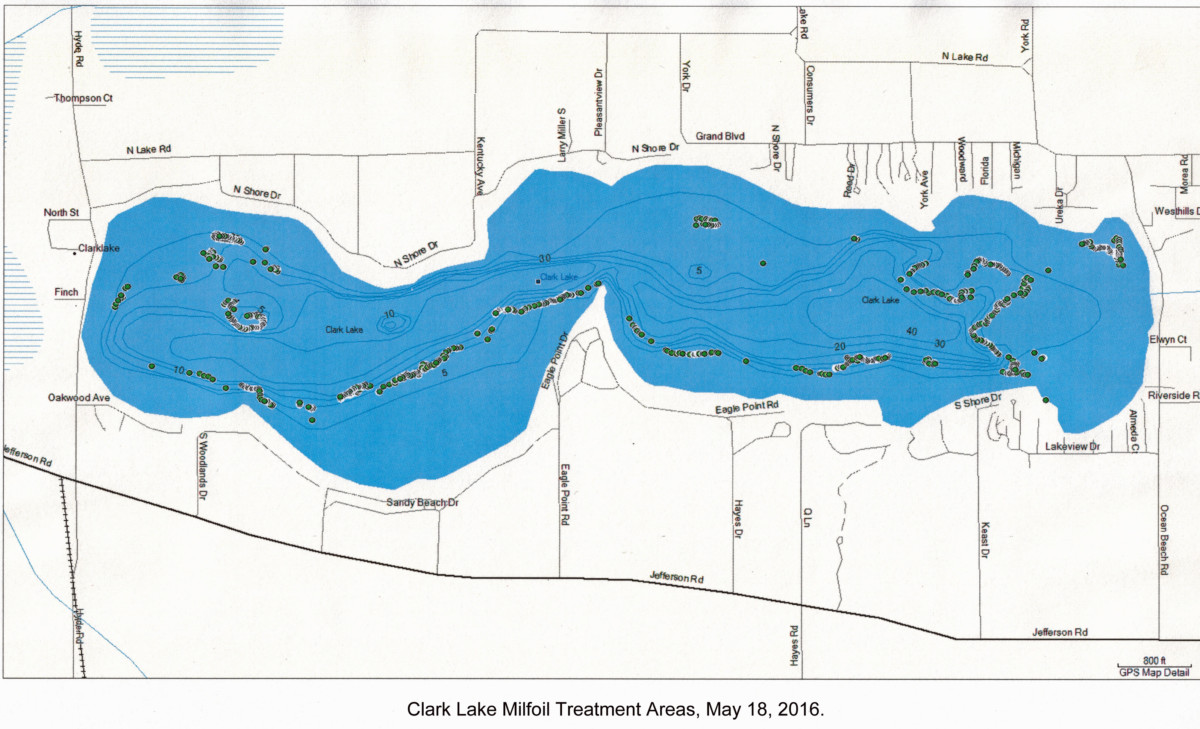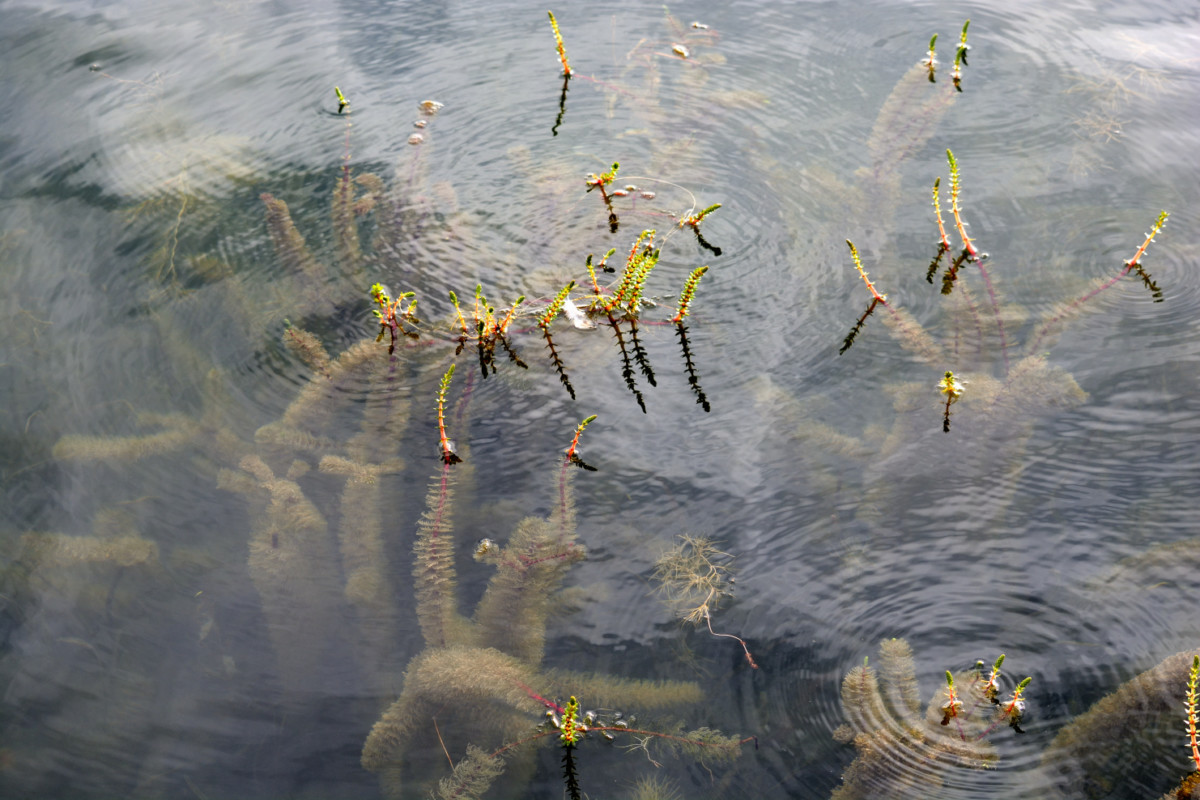by John Deming
This summer marked the first lake-wide battle against an invasive species known as hybrid Eurasian water milfoil (HEWM). Because a special assessment district (SAD) was established last summer, the weed can be targeted anywhere found in the lake. A survey this spring revealed 30-acres of it. In 2015 there were 25 acres, but just 4.5 acres were treated because of riparian restrictions. HEWM spreads quickly. Infected lakes that did not take action found that it greatly curtailed recreational uses, destroyed wildlife habitat and hurt property values.
Our first treatment this season took place in May followed by spot treatments in July. How successful was it? A thorough assessment will have to wait until water clarity improves later this month or early October. Initial results appear favorable. The fall survey will tell the licensed operator employed by the township, Professional Lake Management (PLM), how many acres remain to be tackled in 2017.
The SAD both allows treatment anywhere the weed is found–and also pays for it. The cost to lakefront taxpayers was $64 per parcel this year. The amount can vary somewhat depending on need. This topic is regularly updated on this website. You can review updates and research under the Invasive Weeds tab. It also tells the story of how 95% of lakefront property owners contacted signed a petition to form the SAD.
It’s believed HEWM invaded Clark Lake as a hitchhiker on watercraft that had recently visited infected bodies of water—and there are many in our region. Boat washing and other precautions could have slowed it down. Setting up the infrastructure is costly and some people won’t cooperate. Subsequent boat washing efforts haven’t worked.
 More troubling is an invasive species more devastating than HEWM. Starry stonewort (SS) is an algae. Like HEWM it spreads wildly and has similar negative effects. But treatment that successfully targets HEWM, hasn’t worked well on SS. Solutions may emerge through research and field experience, but so far there is no silver bullet. So how do we deal with it? Simple boat washing won’t do the job. SS can hide on trailer bunks sandwiched against the boat hull. It can remain dormant for up to two weeks out of the water and then come to life when the trailer hits the water again. That’s how it could gain entrance to Clark Lake.
More troubling is an invasive species more devastating than HEWM. Starry stonewort (SS) is an algae. Like HEWM it spreads wildly and has similar negative effects. But treatment that successfully targets HEWM, hasn’t worked well on SS. Solutions may emerge through research and field experience, but so far there is no silver bullet. So how do we deal with it? Simple boat washing won’t do the job. SS can hide on trailer bunks sandwiched against the boat hull. It can remain dormant for up to two weeks out of the water and then come to life when the trailer hits the water again. That’s how it could gain entrance to Clark Lake.
 Is there an answer? Until better treatment programs are developed, the best offense is a strong defense. We can reduce the probability of having a SS problem here by reducing the number of potentially infected boats from elsewhere. Obviously, boats that only operate in Clark Lake aren’t the problem. Boats from infected lakes pose a big threat.
Is there an answer? Until better treatment programs are developed, the best offense is a strong defense. We can reduce the probability of having a SS problem here by reducing the number of potentially infected boats from elsewhere. Obviously, boats that only operate in Clark Lake aren’t the problem. Boats from infected lakes pose a big threat.
In the coming weeks and months, the SS problem will be researched and examined by the Clark Lake Invasive Species Committee. Our committee, that has operated with the help of the Clark Lake Spirit Foundation, welcomes your input. Email: Clarklakespirit@gmail.com.











